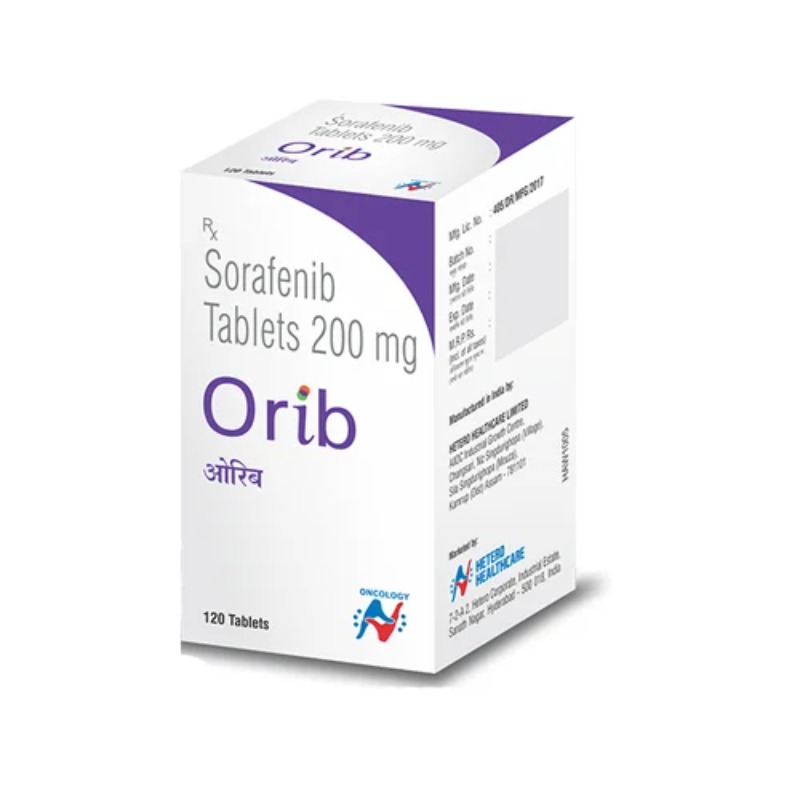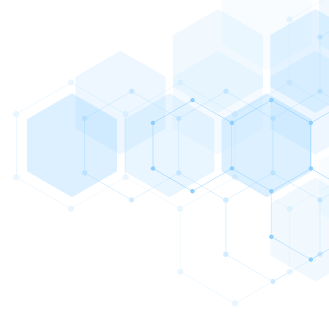DESCRIPTION
Mechanism of Action
• Inhibits multiple receptor tyrosine kinases (RTKs), some of which
are involved in tumor growth, tumor angiogenesis, and metastasis.
• Potent inhibitor of intracellular kinases, including c-Raf and wildtype
and mutant B-Raf.
• Targets vascular endothelial growth factor receptors, VEGF-R2 and
VEGF-R3, and platelet-derived growth factor receptor-β (PDGFR-β),
and in so doing, inhibits angiogenesis.
Mechanism of Resistance
None well characterized to date.
Absorption
Rapidly absorbed after an oral dose with peak plasma levels achieved
within 2 to 7 hours. Oral administration should be without food at least
1 hour before or 2 hours after eating, as food with a high fat content reduces
oral bioavailability by up to 29%.
Distribution
Extensive binding (99%) to plasma proteins. Steady-state drug concentrations
are reached in 7 days.
Metabolism
Metabolized in the liver primarily by CYP3A4 microsomal enzymes and
by glucuronidation mediated by UGT1A9. Parent drug accounts for
70%–85% at steady state, while the pyridine-N-oxide metabolite, which has
similar biological activity to sorafenib, accounts for 9%–16%. Elimination is
hepatic with excretion in feces (,77%), with renal elimination of the glucuronidated
metabolites accounting for 19% of the administered dose. The
terminal half-life of sorafenib is approximately 25 to 48 hours.
Indications
1. FDA-approved for the treatment of advanced renal cell cancer.
2. FDA-approved for the treatment of unresectable hepatocellular
cancer (HCC).
Dosage Range
Recommended dose is 400 mg PO bid. Dose may need to be reduced in
Asian patients, as they appear to experience increased toxicity to sorafenib.
Drug Interaction 1
Drugs such as ketoconazole, and other CYP3A4 inhibitors, may decrease
the rate of metabolism of sorafenib. However, one study with ketoconazole
administered at a dose of 400 mg once daily for 7 days did not alter the mean
AUC of a single oral dose of sorafenib 50 mg in healthy volunteers.
Drug Interaction 2
Drugs such as rifampin, phenytoin, phenobarbital, carbamazepine, and
St. John’s Wort increase the rate of metabolism of sorafenib, resulting in its
inactivation.
Special Considerations
1. Sorafenib should be taken without food at least 1 hour before
or 2 hours after a meal.
2. No dose adjustment is necessary in patients with Child-Pugh A and B
liver dysfunction. However, sorafenib has not been studied in
patients with Child-Pugh C liver disease, and caution should be used
in this setting.
3. No dose adjustments are necessary in patients with mild-to-moderate
renal dysfunction. Sorafenib has not been studied in patients undergoing
dialysis.
Chemotherapeutic and Biologic Drugs 389
S 4. Use with caution when administering sorafenib with agents that are
metabolized and/or eliminated by the UGT1A1 pathway, such as irinotecan,
as sorafenib is an inhibitor of UGT1A1.
5. Patients receiving sorafenib along with oral warfarin anticoagulant
therapy should have their coagulation parameters (PT and INR)
monitored frequently as elevations in INR and bleeding events have
been observed.
6. Closely monitor blood pressure while on therapy, especially during
the first 6 weeks of therapy, and treat as needed with standard
oral antihypertensive medication.
7. Skin toxicities, including rash and hand-foot reaction, should be
managed early in the course of therapy with topical treatments for
symptomatic relief, temporary interruption, dose reduction, and/or
discontinuation. Sun exposure should be avoided, and periodic dermatologic
evaluation is recommended.
8. Sorafenib therapy should be interrupted in patients undergoing
major surgical procedures.
9. Avoid Seville oranges, starfruit, pomelos, grapefruit, and grapefruit
juice while on sorafenib therapy.
10. Pregnancy category D. Breastfeeding should be avoided.
Toxicity 1
Hypertension usually occurs within 6 weeks of starting therapy and
well-controlled with oral antihypertensive medication.
Toxicity 2
Skin rash. Hand-foot skin reaction occurs in up to 30%. Rare cases of
actinic keratoses and cutaneous squamous cell cancer have been reported.
Toxicity 3
Bleeding complications with epistaxis most commonly observed.
Toxicity 4
Wound healing complications.
Toxicity 5
Constitutional side effects with fatigue and asthenia.
Toxicity 6
Diarrhea and nausea are the most common GI side effects.
Toxicity 7
Hypophosphatemia occurs in up to 45% of patients, but usually clinically
asymptomatic.
SPECIFICATION


Login To Comment